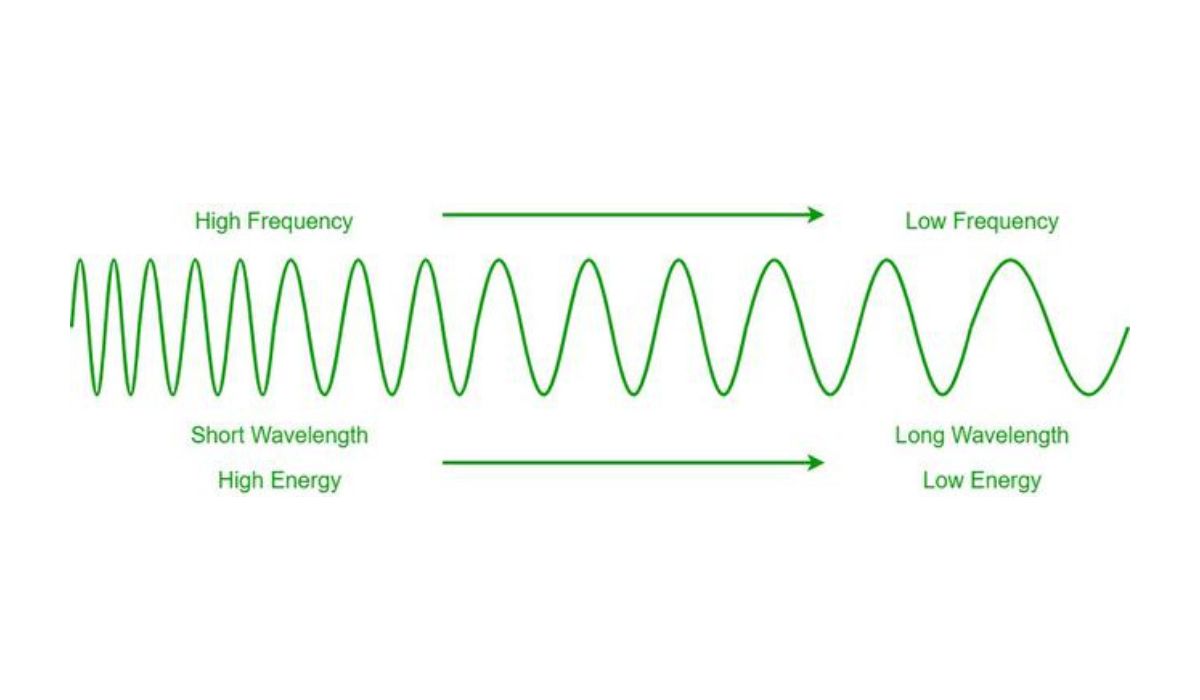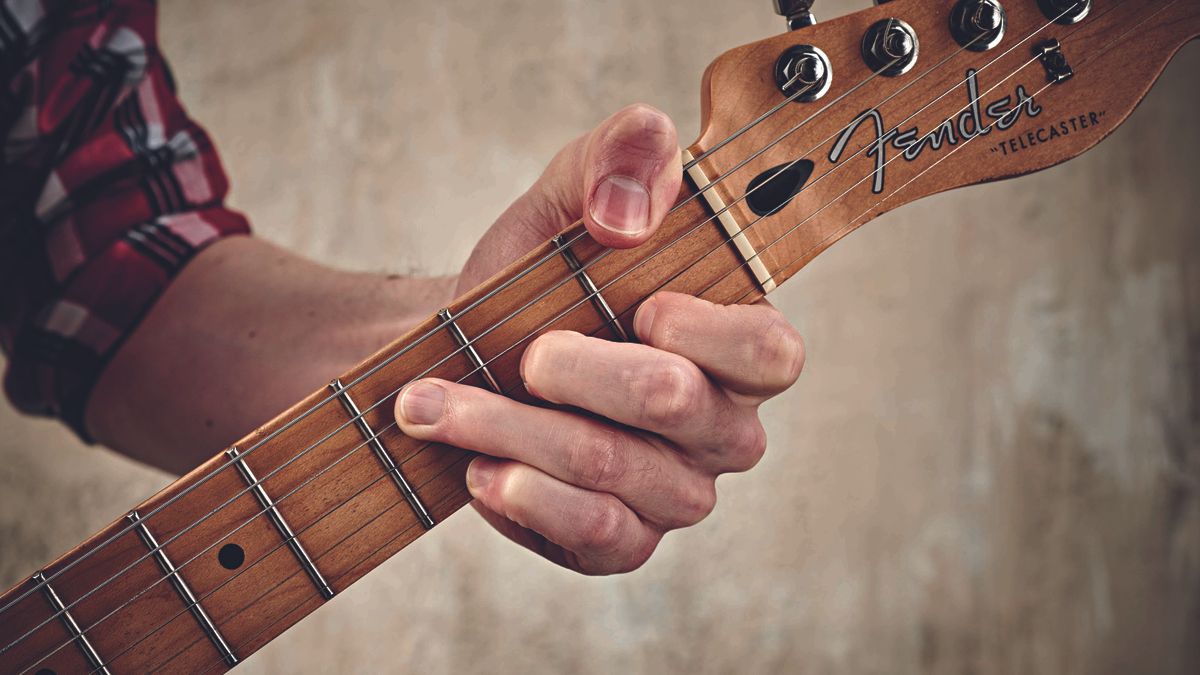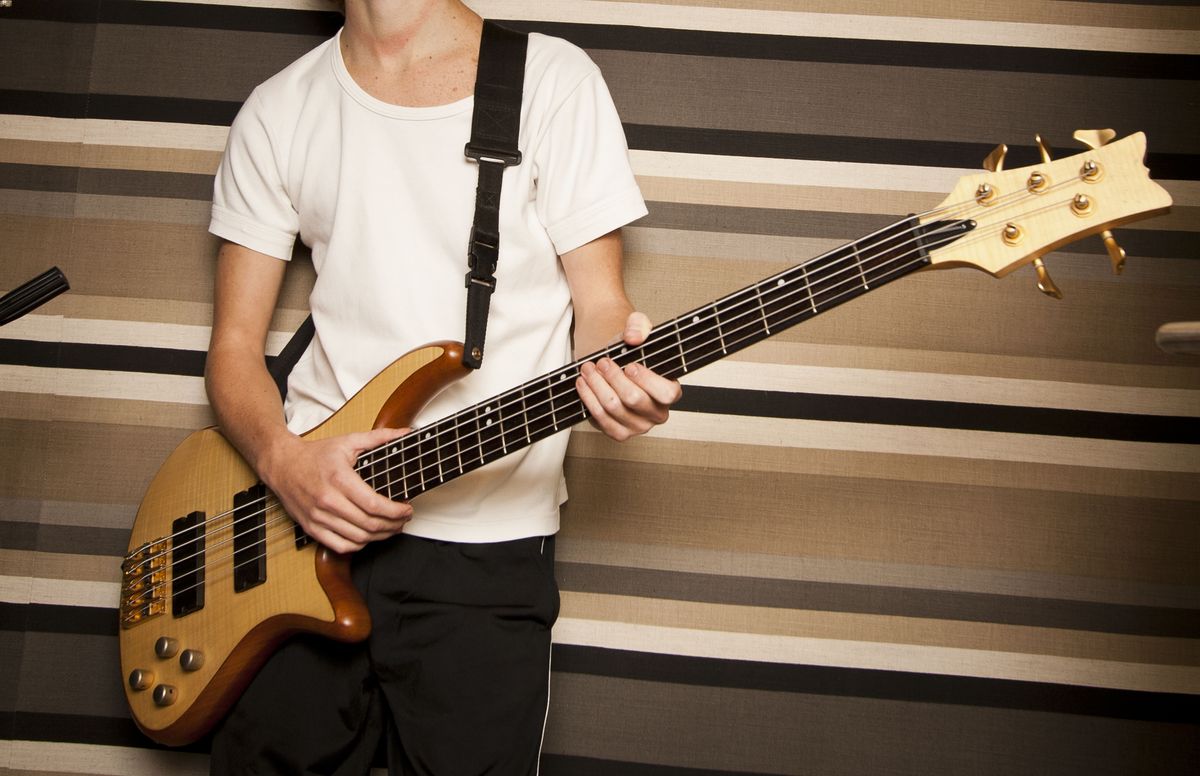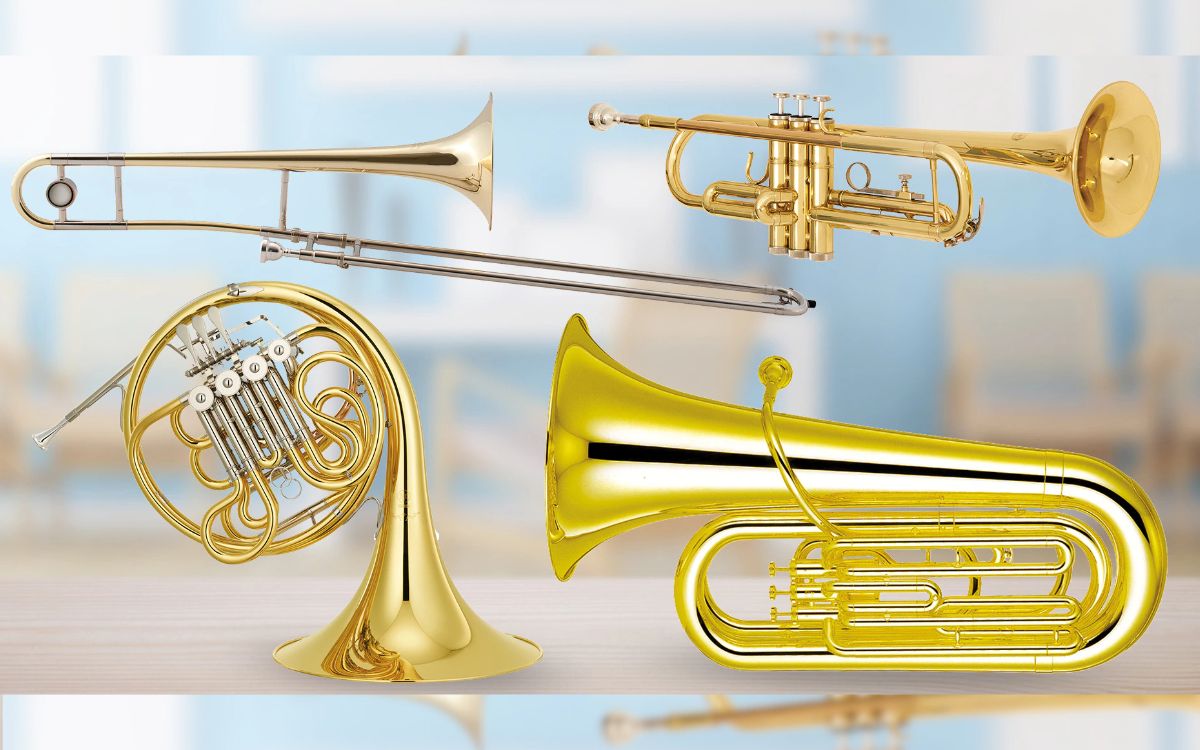Home>Instruments>Bass>Bass: How Low Can You Go
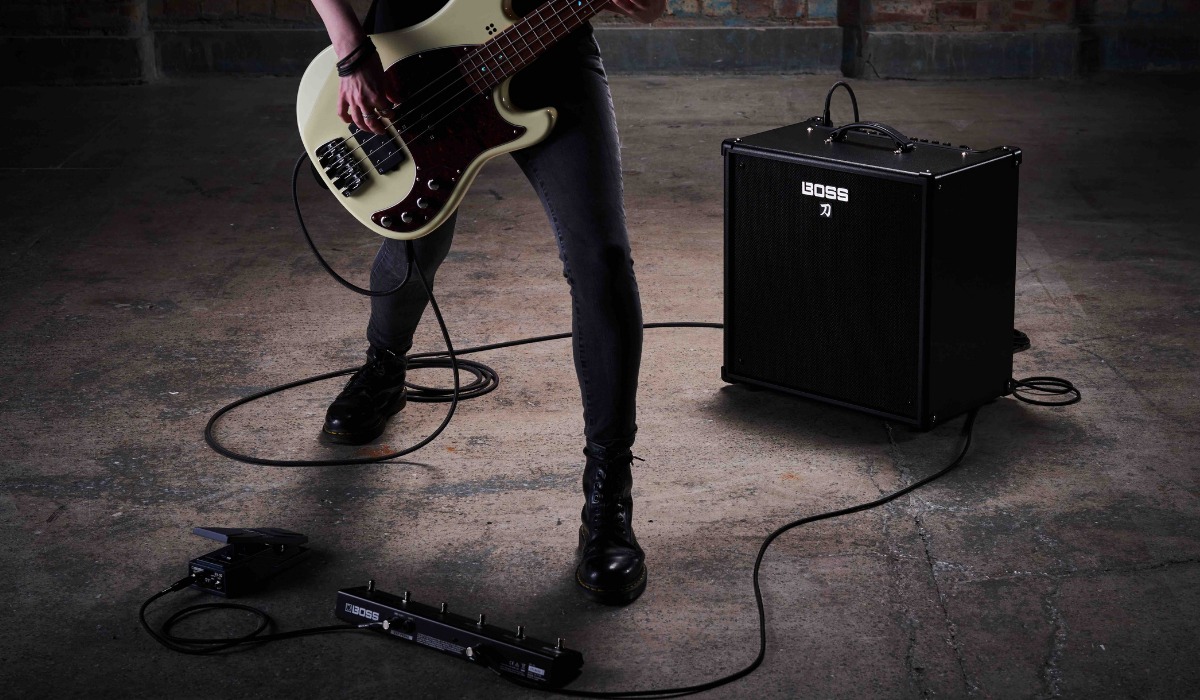

Bass
Bass: How Low Can You Go
Modified: January 22, 2024
Discover the fascinating world of bass and learn just how low you can go. Uncover the secrets of this deep, powerful instrument and explore its rich history and diverse playing techniques.
(Many of the links in this article redirect to a specific reviewed product. Your purchase of these products through affiliate links helps to generate commission for AudioLover.com, at no extra cost. Learn more)
Table of Contents
- Introduction
- The Basics of Bass
- Understanding Bass Frequency
- The Role of Bass in Music
- Types of Bass Instruments
- Techniques for Playing Bass
- Popular Bass Players and Styles
- The Evolution of Bass in Popular Music
- Exploring Different Genres of Bass-Heavy Music
- The Impact of Bass on Sound Systems
- Bass-Boosting Technologies and Effects
- The Future of Bass in Music
Introduction
The bass is the backbone of music, the deep rumbling force that adds warmth, power, and rhythm to any song. From the smooth grooves of funk to the thundering beats of electronic music, bass has the ability to move us physically and emotionally. It is an essential element that can make or break a composition.
But what exactly is bass? In musical terms, bass refers to the low-pitched sounds that form the foundation of a piece of music. It is the lowest range of musical notes, typically played by instruments specifically designed for this purpose, such as bass guitars, double basses, and synthesizers.
The importance of bass cannot be overstated. It provides the harmonic and rhythmic framework for other instruments and vocals to build upon, giving them a solid and stable structure. In many genres, such as reggae, dubstep, and hip-hop, the bass takes center stage, driving the entire song and creating a powerful impact on the listener.
Understanding the intricacies of bass frequency is crucial to harnessing its full potential. The resonant, low-frequency vibrations created by bass instruments and sound systems can be felt as much as they are heard, creating a visceral experience that reverberates through the body. Harnessing this power is an art form in itself, requiring a deep understanding of musical theory and technical knowledge.
In this article, we will explore the world of bass in music, delving into its historical significance, various instruments used to produce bass, techniques for playing bass, influential bass players and styles, and the impact of bass on different music genres. We will also take a look at the evolution of bass in popular music and the advancements in technology that have shaped its sound.
So, get ready to dive deep into the world of bass, where we will uncover the secrets to creating stunning compositions, explore the genres that rely heavily on bass, and discuss the future of this integral element in the ever-changing landscape of music.
The Basics of Bass
Before we delve into the technicalities of bass, let’s start with the basics. In its simplest form, bass refers to the low-pitched sounds in music. It is often associated with a deep, resonant tone that adds depth and richness to a composition.
Bass instruments are specifically designed to produce these low frequencies. The most common bass instrument is the bass guitar, which typically has four strings tuned to the notes E, A, D, and G. Other bass instruments include the double bass, also known as the upright bass or contrabass, and synthesizers that can generate deep, synthesized bass sounds.
One of the key characteristics of bass is its long sustain. This means that when a note is played on a bass instrument, it continues to sound for an extended period of time. This helps create a solid foundation for the rest of the music and allows the bass to drive the rhythm and groove of a piece.
When playing bass, the techniques used are different from those used on other instruments. The role of the bass player is to provide a solid rhythmic foundation, often working in conjunction with the drummer to create a tight and cohesive rhythm section. Bass players use techniques such as plucking the strings with their fingers (known as fingerstyle) or using a pick to create different tones and textures.
Understanding the relationship between bass and other instruments is crucial for creating a well-balanced mix. The bass should complement and support the melody and harmonies played by other instruments, while still maintaining its own distinct presence. Balancing the levels and EQ of the bass with the rest of the instruments is vital to prevent it from overpowering or getting lost in the mix.
Throughout the history of music, bass has played a vital role in various genres. From the walking bass lines of jazz and the driving lines of rock and blues to the heavy and distorted bass sounds of metal and the pulsating electronic basslines of dance music, each genre has its own unique approach to utilizing the power of bass.
As we explore the world of bass, we will delve deeper into the techniques, styles, and genres that have shaped its sound. So, tighten your strings and get ready to dive into the world of bass, where we will uncover the secrets to creating powerful rhythms, captivating melodies, and unforgettable musical experiences.
Understanding Bass Frequency
In order to fully grasp the essence of bass and its impact on music, it is important to understand bass frequency. Bass frequency refers to the specific range of low-pitched sounds that are produced by bass instruments and sound systems.
Sound is made up of vibrations that travel through the air, and these vibrations can be categorized by their frequency, which is measured in hertz (Hz). The frequency of a sound wave determines how high or low the pitch of the sound is. Bass frequencies are typically considered to range from 20 Hz to 250 Hz, although this can vary depending on the context and genre.
Low-frequency sounds, such as bass, have longer wavelengths compared to higher-frequency sounds. The longer the wavelength, the more physical space it requires to fully manifest. This is why bass frequencies are often felt as much as they are heard. They have the power to create a physical sensation, making the listener feel immersed in the music.
Understanding bass frequency is essential for producers, engineers, and musicians alike. It allows them to make informed decisions when it comes to sound design, mixing, and mastering. By knowing the characteristics of the bass frequency range, they can ensure that the bass is clear, well-defined, and balanced in the overall mix.
The manipulation of bass frequency is also a vital aspect of creating impactful and dynamic music. By boosting or cutting specific frequencies within the bass range, a producer or engineer can shape the tonal qualities and character of the bass sound. This can help it cut through the mix, add warmth and depth, or emphasize specific harmonics.
It is worth noting that bass is not limited to a single frequency range. Different instruments and sound systems have their own unique capabilities in terms of producing and reproducing bass frequencies. For example, a bass guitar may have a different range and tonal characteristics compared to a synthesizer or a subwoofer in a sound system.
Furthermore, the interplay between bass frequencies and the rest of the frequency spectrum is critical for achieving a balanced mix. When the bass is too overpowering, it can cause the music to sound muddy and overwhelms other instruments. On the other hand, if the bass is too weak, the music may lack depth and impact.
By understanding and harnessing the power of bass frequency, musicians and producers can create music that is sonically pleasing, emotionally engaging, and physically stimulating. Whether it’s the driving force behind a dancefloor anthem or the gentle pulse of a ballad, bass frequency is a fundamental element that adds a new dimension to the listening experience.
The Role of Bass in Music
The role of bass in music goes far beyond simply providing low-pitched sounds. It serves as the foundation upon which a composition is built, adding depth, groove, and coherence to the overall musical experience.
One of the primary roles of bass is to establish and maintain the rhythm of a song. By locking in with the drummer and other rhythm instruments, the bass creates a solid and steady pulse that keeps the music grounded. This rhythmic foundation allows other instruments, such as guitars, keyboards, and vocals, to weave their melodies and harmonies on top.
Furthermore, bass adds a sense of dynamics and emotion to music. It has the power to evoke a wide range of emotions, from the punchy and aggressive basslines of rock and metal to the smooth and melodic basslines of jazz and R&B. Bass can convey the mood of a song, whether it’s providing a steady groove for dancing or creating a melancholic atmosphere.
In addition to rhythm and emotion, bass also provides harmonic support to a composition. By outlining the root notes of chords and providing a strong foundation for the harmony, bass helps to establish the overall structure and tonality of a song. It adds a sense of stability and direction, allowing the listener to follow along and anticipate the twists and turns of the music.
Beyond its fundamental roles, bass also has the ability to enhance the overall sound and impact of a composition. By adding depth and richness to the mix, bass fills out the sonic space, creating a fuller and more immersive listening experience. It can add weight and power to a chorus, create tension and anticipation in a build-up, or bring a sense of release and resolution in a breakdown.
Furthermore, bass has the ability to unify different elements of a song. Whether it’s linking the verse and chorus sections, connecting different instrumental motifs, or bridging the gap between different musical genres, bass acts as a sonic glue that binds the elements together. It helps create a sense of continuity and coherence, making the music feel cohesive and complete.
Overall, the role of bass in music is multifaceted and crucial. It serves as the backbone, the driving force, and the soul of a composition. It provides rhythm, emotion, harmony, and sonic depth, giving the music its character and impact. Without bass, music would lack its foundation and distinctive groove, leaving it devoid of the necessary elements that make it truly captivating and memorable.
Types of Bass Instruments
When it comes to creating the low-pitched foundation in music, there are several types of bass instruments that are commonly used. Each instrument has its own unique characteristics, tonal qualities, and playing techniques, adding a distinct flavor to the overall sound of a composition.
One of the most recognizable bass instruments is the bass guitar. It is a stringed instrument that typically has four strings, although five- and six-string bass guitars are also common. The bass guitar is played by plucking or strumming the strings with the fingers or a pick. It is versatile and widely used in a variety of genres, from rock and pop to jazz and funk.
Another prominent bass instrument is the double bass, also known as the upright bass or contrabass. It is a large stringed instrument with a deep, rich sound. The player typically stands or sits while playing the double bass, using a combination of plucking and bowing techniques. The double bass is commonly found in classical music, jazz, and certain forms of folk music.
Synthesizers also play a significant role as bass instruments. They are electronic instruments that can generate a wide variety of sounds, including deep, synthesized bass tones. Synthesizers give musicians the ability to create unique, otherworldly bass sounds that are not possible with traditional instruments. They are commonly used in electronic music genres like techno, house, and dubstep.
In addition to these primary bass instruments, there are other instruments that contribute to the bass frequencies in different ways. For example, the tuba, a brass instrument, is known for its deep and resonant bass sounds and is often featured in classical orchestras and marching bands.
When it comes to playing techniques, bass instruments offer a range of possibilities. Bass guitarists can employ techniques like slapping and popping to create percussive and rhythmic sounds. Double bassists can use techniques like arco (bowing) and pizzicato (plucking) to produce different tonal qualities. Synthesizer players can manipulate parameters such as oscillators, filters, and envelopes to shape the bass sound.
Each type of bass instrument brings its own unique character and sonic qualities to the music. Whether it’s the punchy and precise lines of the bass guitar, the rich and resonant tones of the double bass, or the futuristic and synthesized sounds of the synthesizer, the choice of bass instrument significantly impacts the overall vibe and style of a composition.
Ultimately, the selection of a bass instrument depends on the genre, desired sound, and personal preference of the musician or producer. Exploring the different types of bass instruments and their capabilities opens up a world of possibilities, allowing musicians to find the perfect bass sound to complement and enhance their musical creations.
Techniques for Playing Bass
Playing bass requires a unique set of techniques that are distinct from other instruments. These techniques, when mastered, allow bass players to create intricate rhythms, provide a solid foundation, and add a touch of creativity to their playing. Let’s explore some of the common techniques used in bass playing.
One of the fundamental techniques in bass playing is fingerstyle. This technique involves plucking the strings with the fingers, typically using the thumb for the lower strings and the index and middle fingers for the higher strings. Fingerstyle technique allows for greater control and precision, enabling bass players to create various tones and dynamics by adjusting their plucking force and position on the strings.
Another technique widely used by bass players is using a pick. A pick, or plectrum, is a small flat tool made of plastic or metal that is held between the fingers and used to strike the strings. Playing with a pick produces a brighter and more aggressive sound compared to fingerstyle. It is commonly used in genres like rock, punk, and metal where a punchy and aggressive bass tone is desired.
Slap and pop technique is a distinctive technique used in funk, R&B, and slap-style bass playing. With this technique, the strings are struck and snapped against the fingerboard, creating a percussive sound. Slapping involves striking the strings with the thumb, while popping involves plucking the strings with the index and middle finger. This technique adds a rhythmic and funky element to the bass playing, allowing for complex grooves and syncopated rhythms.
Another important skill for bass players is the ability to play with a consistent and steady rhythm. This involves developing a strong sense of timing and groove, working closely with the drummer to create a tight and cohesive rhythm section. Playing in the pocket, where the bass locks in with the drums to establish a solid foundation, is essential for driving the music forward and keeping the listeners engaged.
Advanced techniques, such as tapping, harmonics, and slides, can also be employed to add flair and creativity to bass playing. Tapping involves using both hands to tap the strings, creating fast and intricate melodies. Harmonics are produced by lightly touching the strings at specific points to produce chime-like tones. Slides involve smoothly transitioning between different notes by gliding the finger along the neck of the bass.
It’s important for bass players to develop a solid foundation in basic techniques before diving into advanced techniques. Practicing scales, arpeggios, and exercises focused on finger dexterity and coordination are crucial for building a strong technical foundation.
Ultimately, the choice of technique depends on the desired sound, genre, and personal style of the bass player. Each technique offers a unique way to express oneself and contribute to the musical landscape. By mastering a variety of techniques and incorporating them into their playing, bass players can bring depth, groove, and creativity to their musical endeavors.
Popular Bass Players and Styles
Bass players are the unsung heroes of the music world, holding down the low end and providing the backbone for countless songs. Throughout the history of music, there have been iconic bass players who have left an indelible mark on their respective genres. Let’s explore some notable bass players and the styles they helped shape.
In the realm of rock music, John Entwistle of The Who is often heralded as one of the greatest bass players of all time. His unique melodic approach to bass playing, with intricate runs and solos, set him apart from his peers. His playing on songs like “My Generation” and “Baba O’Riley” showcased his technical prowess and ability to create memorable bass lines that became an integral part of The Who’s sound.
In the world of funk and R&B, Bootsy Collins stands out as a trailblazing bass player. Collins, known for his flamboyant style and funky bass lines, played with artists such as James Brown, Parliament-Funkadelic, and his own band, Bootsy’s Rubber Band. His deep grooves and infectious energy made him a driving force in the era of funk, and his bass lines on songs like “Mothership Connection” and “Give Up the Funk” are timeless examples of his innovative playing.
Jaco Pastorius is widely regarded as a pioneer of jazz-fusion bass playing. His virtuoso skills and fretless bass technique revolutionized the role of the bass in jazz music. Pastorius played with artists such as Weather Report and Joni Mitchell, showcasing his unique blend of melodic and intricate bass lines. His solos on tracks like “Birdland” and “Portrait of Tracy” pushed the boundaries of what was possible on the bass and inspired countless generations of bass players.
In the realm of reggae, Aston “Family Man” Barrett is a legendary bass player. Barrett, known for his work with Bob Marley and The Wailers, created the iconic “one drop” bass groove that has become synonymous with reggae music. His steady and melodic bass lines on songs like “Stir It Up” and “No Woman, No Cry” provided the foundation for Marley’s music and helped popularize reggae on a global scale.
In the world of progressive rock, Chris Squire of Yes left a lasting impact with his intricate and driving bass lines. Squire’s melodic approach and use of harmonics on songs like “Roundabout” and “Heart of the Sunrise” added a layer of complexity and grandeur to the band’s music. His unique playing style, with his distinctive Rickenbacker bass, became a signature sound of Yes and influenced countless bass players in the genre.
These are just a few examples of the countless bass players who have made significant contributions to their respective genres. From rock to jazz, funk to reggae, each bass player brings their own distinct style and technique to the music. The bass serves as the unsung hero, providing the groundwork for the melodies and rhythms to flourish. So, let’s give a round of applause to the bass players who have shaped the landscape of music and continue to inspire generations of musicians.
The Evolution of Bass in Popular Music
Over the course of music history, the role of bass has evolved and expanded, adapting to the changing styles and demands of popular music. From its humble beginnings as a supportive instrument to its prominence as a driving force, the evolution of bass in popular music reflects the ever-evolving nature of musical expression.
In the early days of popular music, bass was primarily a supportive instrument, providing a simple yet crucial foundation for the melody and rhythm. Bass lines were often played with a walking or bouncing style, outlining the chord progressions and adding depth to the music. This can be heard in genres like swing, big band, and early rock ‘n’ roll.
As the 1960s brought the rise of rock and its various subgenres, the bass began to take on a more prominent role. Bass players like Paul McCartney of The Beatles and John Entwistle of The Who started using melodic and innovative bass lines, bringing the instrument to the forefront of the music. This shift can be heard in songs like “Day Tripper” and “My Generation,” where the bass provides a distinct and memorable hook.
The emergence of funk and R&B in the 1970s further pushed the boundaries of bass playing. Pioneering bass players like Bootsy Collins, Larry Graham, and Bernard Edwards brought a newfound focus on the groove and rhythm. Slap and pop techniques, syncopated rhythms, and infectious bass lines became trademarks of the genre, revolutionizing the role of the bass and setting the stage for the funk music movement.
In the 1980s, advancements in technology and the rise of electronic music brought yet another evolution to bass playing. Synthesizers and electric bass guitars equipped with cutting-edge effects and sound-shaping capabilities allowed for the creation of unique and distinct bass sounds. This era saw the emergence of genres like synth-pop and new wave, where the bass played a prominent role in creating the iconic sounds of the time.
The 1990s and early 2000s witnessed the rise of alternative rock, grunge, and nu-metal, where the bass took on a heavier and more aggressive tone. Bass players like Flea of Red Hot Chili Peppers and Justin Chancellor of Tool showcased their skills through intricate and powerful bass lines, adding depth and intensity to the music.
In recent years, bass has continued to evolve and find its place in various contemporary genres. From the driving basslines of EDM and electronic dance music to the intricate and melodic bass playing in modern pop and indie music, the role of bass remains diverse and ever-changing.
The evolution of bass in popular music reflects the evolution of our musical tastes and the constant search for new sounds and expressions. Throughout its journey, the bass has grown from a supportive instrument to a powerful force in its own right, shaping the sound and feel of countless songs. Whether it’s providing a driving rhythm, creating catchy melodies, or experimenting with innovative techniques, the bass continues to evolve and innovate, leaving its mark on the ever-evolving landscape of popular music.
Exploring Different Genres of Bass-Heavy Music
Bass-heavy music spans a wide spectrum of genres, each with its own unique approach to utilizing the power of bass. From the infectious grooves of funk and reggae to the thundering beats of electronic music, exploring these genres offers a deep dive into the richness and diversity of bass-heavy music.
Funk music, with its emphasis on rhythm and groove, is characterized by its prominent and funk-driven bass lines. The bass acts as the driving force behind the music, providing a solid and infectious foundation for the rest of the instruments. Funk bass lines often incorporate techniques such as slap and pop, creating a percussive and melodic sound that makes you want to move.
Reggae, originating from Jamaica, is known for its deep and pulse-ridden basslines. The bass in reggae forms an integral part of the rhythm section, creating a hypnotic and laid-back groove that defines the genre. The “one drop” bass technique, with its emphasis on the third beat, gives reggae its distinctive feel and allows the bass to take center stage in the music.
In the realm of hip-hop and rap, bass plays a crucial role in driving the beat and adding weight to the music. The deep, booming basslines in hip-hop provide a powerful foundation for the rhymes and flow of the artists. From the classic basslines in tracks like “The Message” by Grandmaster Flash and the Furious Five to the heavy bass drops in modern trap music, the bass adds a dynamic and energetic element to the genre.
Electronic dance music (EDM) genres, such as techno, house, and dubstep, rely heavily on bass to create their infectious and energetic soundscapes. From the pulsating sub-bass frequencies in techno to the heavy and wobbly basslines in dubstep, bass in electronic music serves as the driving force, moving the crowd and creating a visceral experience.
In the world of metal, bass adds a layer of heaviness and aggression to the music. Bass guitarists in metal often employ techniques such as fingerstyle and pick playing to create fast and intricate basslines that match the intensity of the guitars and drums. The thunderous bass in metal provides a sonic foundation that adds depth and power to the genre.
These are just a few examples of the many genres that showcase the artistry and impact of bass-heavy music. From the rhythmic and funky basslines of funk to the deep, dub-infused bass in reggae, and the powerful low-end presence in hip-hop and metal, bass plays a dynamic and essential role in shaping the sound and feel of these genres. Exploring the different genres of bass-heavy music allows us to appreciate the diversity and creativity that stems from harnessing the power of bass.
The Impact of Bass on Sound Systems
The impact of bass on sound systems cannot be overstated. Bass frequencies have a unique ability to shake the ground, create a physical presence, and immerse the listener in the music. The proper reproduction of bass is crucial for a satisfying and immersive audio experience, and it places significant demands on sound systems.
Bass frequencies have longer wavelengths compared to higher frequencies, and they require more energy to be accurately reproduced. This means that sound systems must be equipped with powerful amplifiers and robust speakers capable of handling the low-end frequencies. Subwoofers, specifically designed for bass reproduction, play a vital role in delivering the full impact of the deep rumbling bass.
When bass is properly reproduced, it adds depth and dimension to the music, making it feel more expansive and immersive. It creates a visceral experience, allowing the listener to not only hear the bass but feel it resonating through their body. This physical sensation adds a new level of engagement, turning music into a tangible and powerful force.
However, reproducing bass accurately and effectively can be challenging. Bass can easily overpower other frequencies and cause imbalance in the sound mix. Proper equalization (EQ), speaker placement, and acoustic treatment of the listening space are crucial to achieve a balanced and optimized bass response.
The impact of bass also extends beyond the sonic experience. In live concerts, for example, powerful bass vibrations can be felt throughout the venue, enhancing the energy and intensity of the performance. Bass becomes not just an auditory sensation but a physical one as well, heightening the overall concert experience.
Bass also plays a role in shaping the perception of music in different environments. In nightclubs and dance venues, the emphasis on bass is essential for creating a vibrant and energetic atmosphere. The powerful bass helps drive the rhythm and encourages people to move and dance. In contrast, in more intimate listening spaces, the focus may be on the clarity and subtleties of the bass, allowing for a more nuanced and detailed experience.
With the advancements in audio technology, sound systems have evolved to meet the demands of reproducing bass effectively. From advancements in speaker design to the development of bass-enhancing technologies and sound processing techniques, the goal is to accurately reproduce bass without sacrificing the integrity of the music.
Whether it’s a live concert, a home entertainment system, or a nightclub, the impact of bass on sound systems cannot be ignored. It adds power, depth, and emotional impact to the music, creating a truly immersive and engaging audio experience. Properly reproducing and controlling bass is a technical and artistic challenge, but when done right, it elevates the sound system to new heights and captivates the listener’s senses.
Bass-Boosting Technologies and Effects
Bass-boosting technologies and effects have revolutionized the way we experience and manipulate bass in music. These advancements allow us to enhance the impact and presence of bass frequencies, shaping the sound to create a more immersive and dynamic listening experience. Let’s explore some of the bass-boosting technologies and effects that have made a significant impact in the world of audio engineering.
Equalization (EQ) is one of the most common and versatile tools for boosting bass. With EQ, specific frequencies can be emphasized or attenuated, allowing engineers to shape the tonal balance of a piece of music. By boosting the lower frequencies, known as the bass range, the overall sound becomes weightier and more pronounced. Properly applied EQ can add warmth and depth to bass instruments, making them stand out in the mix without overpowering other elements.
Subwoofers are dedicated speakers designed to reproduce low-frequency sounds, including the deepest bass notes. They enhance the low-end response of sound systems, allowing for the reproduction of powerful, earth-shaking bass. When properly calibrated and integrated into a sound system, subwoofers provide the physical impact and presence that is felt as much as it is heard.
Bass enhancement processors and effects are commonly used to further enhance the bass frequencies in audio recordings. These processors apply algorithms and psychoacoustic techniques to manipulate the bass presentation, boosting certain frequencies or adding harmonics to create a perceived increase in bass presence. Bass enhancers can be found in software plugins, audio devices, and even in consumer headphones, providing users with the ability to customize the bass experience to their liking.
Compression is another powerful tool that can be used to boost bass in music. By reducing the dynamic range of a bass signal, compression brings up the quiet parts and tames the louder sections. This creates a more consistent and upfront bass sound, allowing the listener to fully appreciate the nuances and impact of the bassline.
Modern music production also makes use of effects like distortion and saturation to add character and warmth to bass sounds. When applied tastefully, these effects can bring out harmonics and overtones that enrich the bass tone, adding depth and complexity to the sound. They are commonly found in genres like rock, metal, and electronic music, where a gritty and distorted bass sound is desired.
Bass-boosting technologies and effects allow us to tailor the bass to our preferences and create a more immersive listening experience. However, it is important to use these tools judiciously and in balance with the other elements in the mix. Overused or excessive bass boosting can lead to a muddy and unbalanced audio presentation. It is crucial for audio engineers and music producers to carefully consider the context and intent of their bass enhancements to ensure that the result is a well-balanced and impactful sound.
From EQ and subwoofers to bass enhancement processors and effects, these technologies have opened up new possibilities in shaping and augmenting the bass frequencies in music. They empower us to create a more captivating and engaging listening experience, allowing the bass to reach its full potential and leave a lasting impact on the listener.
The Future of Bass in Music
The future of bass in music holds exciting possibilities as technology continues to evolve and musicians push the boundaries of creativity. From advancements in sound design and production techniques to innovations in bass instruments and the way we consume music, the future of bass promises to be filled with new sonic frontiers and immersive experiences.
One aspect that is likely to shape the future of bass is advancements in audio technology. We can expect further developments in bass reproduction systems, with improved subwoofers, speaker designs, and room acoustics to provide even more accurate and powerful bass response. This will allow listeners to experience the full impact of bass in a more immersive and realistic way, whether it’s in live concert settings or the comfort of their own homes.
The integration of artificial intelligence (AI) and machine learning into music production and composition is also likely to have an impact on bass. AI algorithms can analyze vast amounts of music data and learn from existing bass lines to generate new, innovative bass patterns. This opens up possibilities for musicians to explore unique and unconventional bass compositions, pushing the boundaries of what is traditionally expected from bass lines.
As music production and distribution become more accessible, we can expect an increase in bass-heavy music across a wide range of genres. Artists and producers will have the freedom and tools to experiment with bass in new and creative ways, resulting in fresh and innovative compositions that challenge traditional genres and push the envelope of what is considered “normal” bass usage.
The rise of virtual reality (VR) and immersive audio experiences can also play a significant role in shaping the future of bass. VR allows for a more interactive and multidimensional musical experience, where the listener is surrounded by a three-dimensional audio landscape. Immersive audio technologies, such as spatial audio and binaural recordings, can create a sense of being enveloped by the music, with bass frequencies vibrating and traveling in a 360-degree space. This level of immersion offers a new dimension to bass, making the listener feel physically and emotionally connected to the music.
Another aspect that may influence the future of bass is the continued exploration of cross-genre collaborations. Artists from different genres coming together to merge their unique styles and techniques can lead to exciting combinations of bass elements. This cross-pollination of genres can result in the creation of new genres or subgenres that embrace and highlight the power of bass in fresh and unexpected ways.
Ultimately, the future of bass in music will be shaped by the imagination and innovation of musicians, producers, and technology developers. As creativity and technology continue to advance, we can expect new sonic landscapes, enhanced bass experiences, and a deeper appreciation for the role of bass in shaping the musical journey. Whether through advancements in audio technology, AI-driven compositions, immersive experiences, or genre-blending collaborations, the future of bass in music is sure to be an exciting and groundbreaking one.

